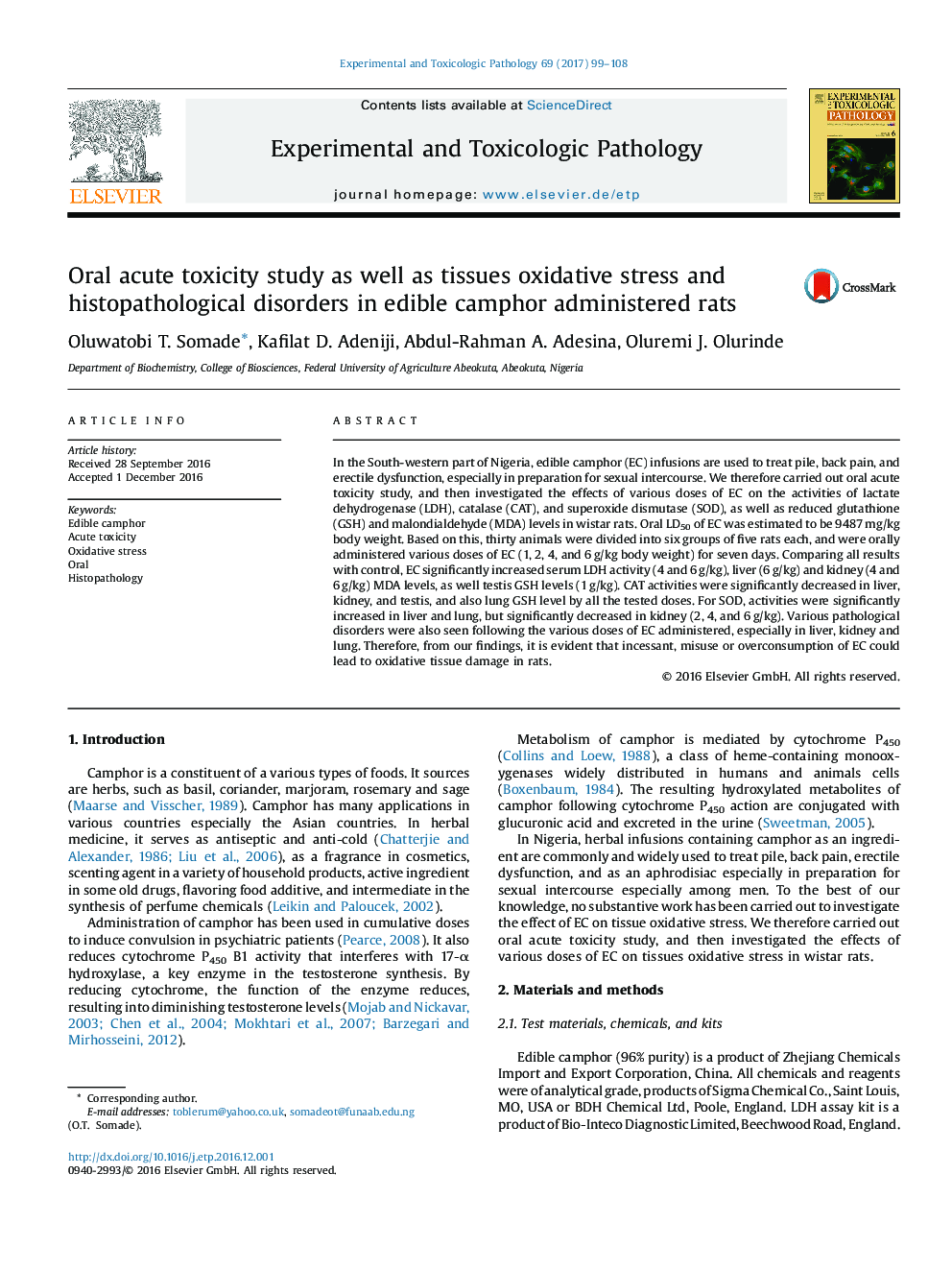| Article ID | Journal | Published Year | Pages | File Type |
|---|---|---|---|---|
| 5549805 | Experimental and Toxicologic Pathology | 2017 | 10 Pages |
In the South-western part of Nigeria, edible camphor (EC) infusions are used to treat pile, back pain, and erectile dysfunction, especially in preparation for sexual intercourse. We therefore carried out oral acute toxicity study, and then investigated the effects of various doses of EC on the activities of lactate dehydrogenase (LDH), catalase (CAT), and superoxide dismutase (SOD), as well as reduced glutathione (GSH) and malondialdehyde (MDA) levels in wistar rats. Oral LD50 of EC was estimated to be 9487Â mg/kg body weight. Based on this, thirty animals were divided into six groups of five rats each, and were orally administered various doses of EC (1, 2, 4, and 6Â g/kg body weight) for seven days. Comparing all results with control, EC significantly increased serum LDH activity (4 and 6Â g/kg), liver (6Â g/kg) and kidney (4 and 6Â g/kg) MDA levels, as well testis GSH levels (1Â g/kg). CAT activities were significantly decreased in liver, kidney, and testis, and also lung GSH level by all the tested doses. For SOD, activities were significantly increased in liver and lung, but significantly decreased in kidney (2, 4, and 6Â g/kg). Various pathological disorders were also seen following the various doses of EC administered, especially in liver, kidney and lung. Therefore, from our findings, it is evident that incessant, misuse or overconsumption of EC could lead to oxidative tissue damage in rats.
